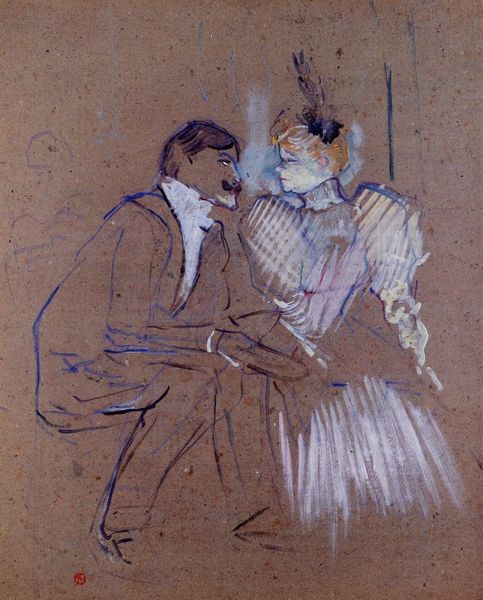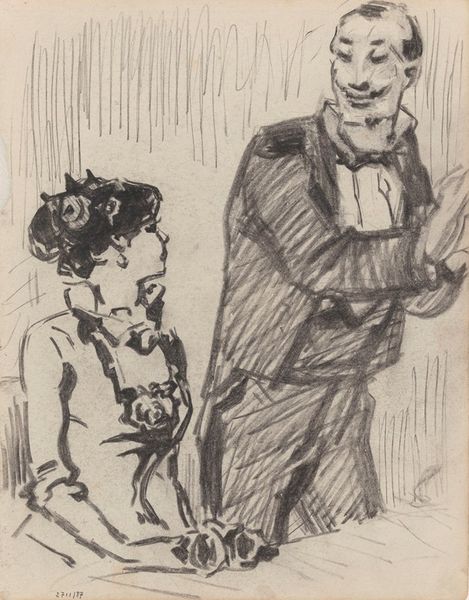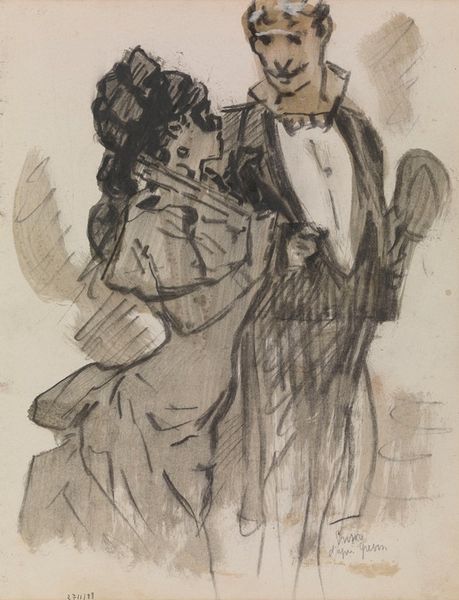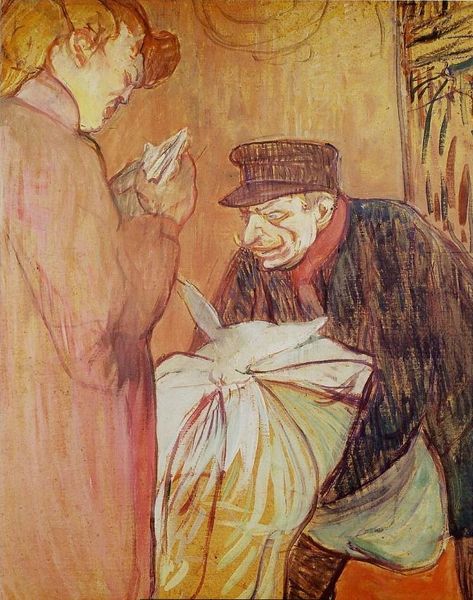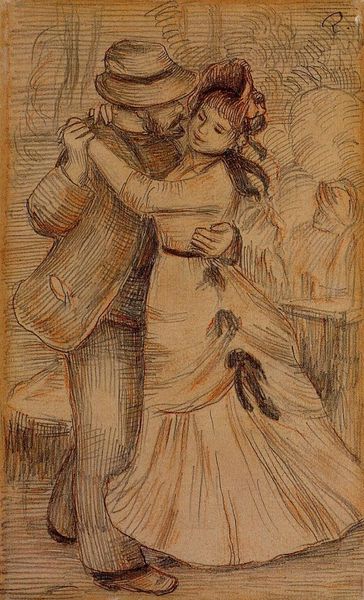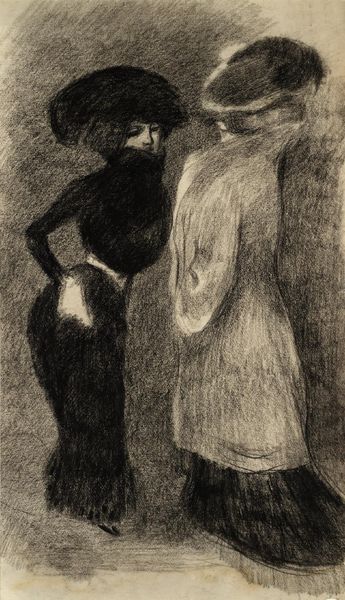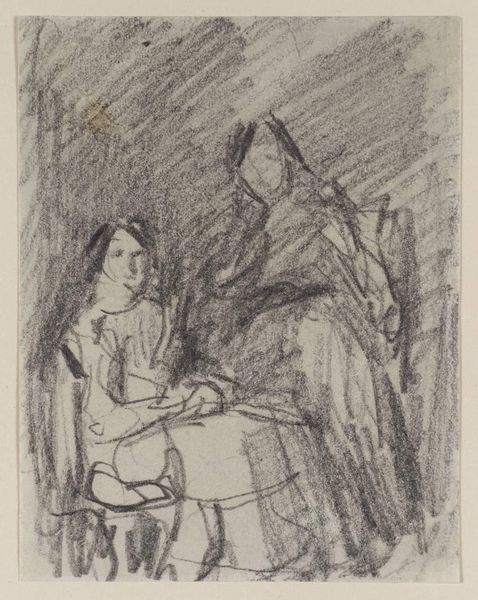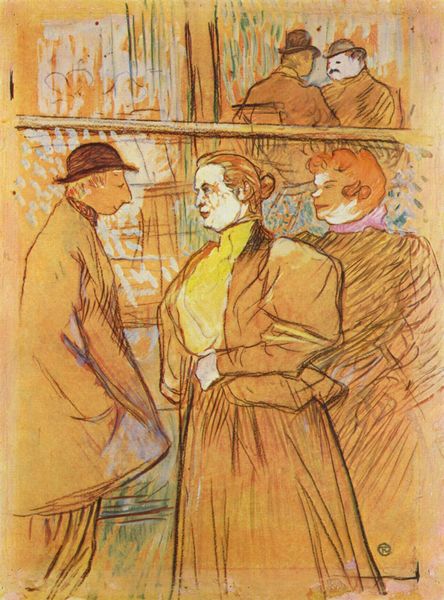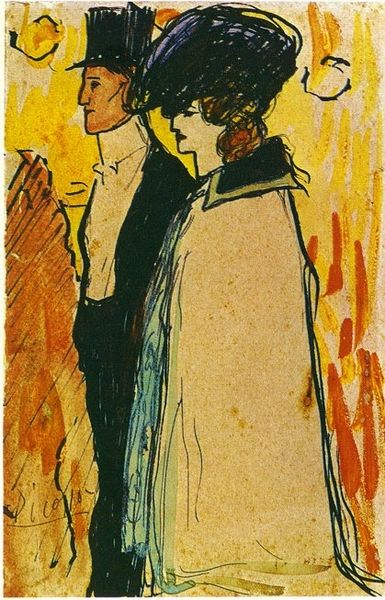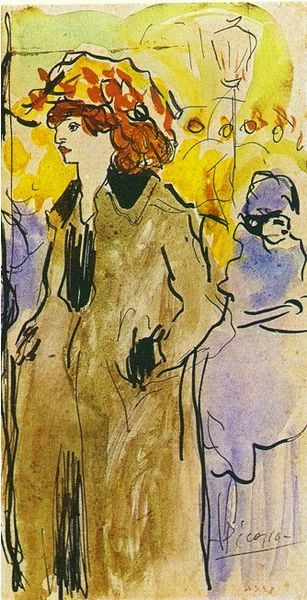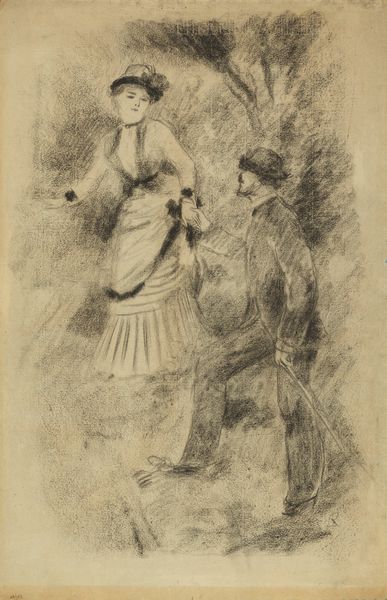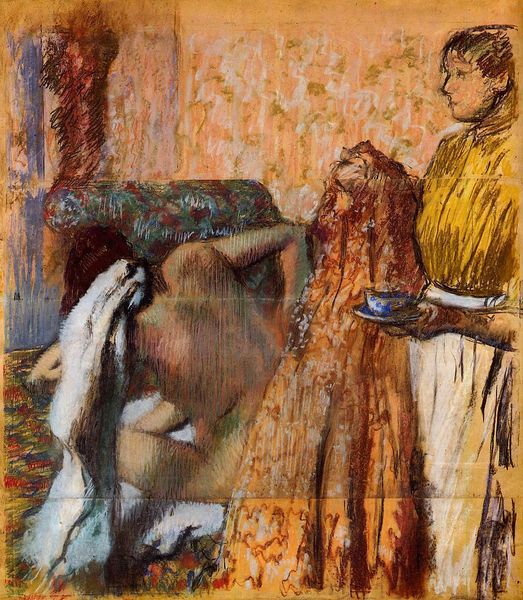
Dimensions: 110 x 70 cm
Copyright: Public domain
Curator: What we’re looking at is Edgar Degas' "Study for a Portrait" from 1904, a pencil and pastel work currently in a private collection. The artwork features a woman seated and a man standing, rendered in quick, expressive lines. Editor: There's a gentleness here, a sense of quiet contemplation. The sketch-like quality adds a certain intimacy; like we’re observing a private moment. But I wonder about their relationship…it doesn’t strike me as particularly warm or close. Curator: That resonates. Degas was less interested in sentimental portraiture and more focused on capturing the subtleties of human interaction within a rapidly changing social landscape. Think of how Parisian society was redefining gender roles and class structures around this time. Editor: Exactly. Her posture is so withdrawn, almost diminutive, beside him. His stature dominates the composition. You can read a whole power dynamic in the staging alone. What I find curious is how he captures them amidst a background with those pastel marks suggesting foliage and how it might also speak to the way that their identities are also ‘grown’ as part of larger environmental factors. Curator: That’s astute. Degas' decision to situate them in an almost undefined setting—emphasizing only the figures and their relationship—pushes the viewer to consider their individual psychologies. How the individual internalises such issues is equally if not more interesting for Degas, I think. Editor: The use of pastel creates a softened effect. It softens any harshness, but perhaps subtly reinforces a certain romanticism expected of the period whilst all the time disrupting it too? He uses the formal rules but makes the picture entirely his own and thus, progressive. Curator: Certainly. It’s important to recall the institutional role Degas played, too. His work with the Impressionists was central in disrupting traditional academic styles, placing the study of the figure within more immediate, observable environments. That shift away from idealized depictions was a powerful one. Editor: Ultimately, Degas invites us to reflect not just on the depicted individuals, but on ourselves and our own contemporary lens, inviting debate about societal constructions and the gaze we all operate within even when we might not know it. Curator: A sketch about people but also perhaps more precisely, about the spirit and people within changing times; a potent message.
Comments
No comments
Be the first to comment and join the conversation on the ultimate creative platform.
